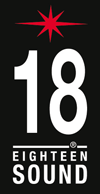A bit of a ramble here while I'm stuck at home contemplating projects to build.
My inexperienced criteria that don't necessarily need to apply:
Acoustically transparent screen for ideal speaker placement.
Seated around 10-12 feet from the screen in a room <5000ft^3.
Reference level appropriate to room size: I've seen 78dB suggested for screen and surround channels instead of 85dB.
Multiple subwoofers painstakingly placed and aligned to cover <80Hz.
Sealed speakers with second order rolloff to integrate better with typical AVR bass management.
Room treatments as necessary.
No dipole or quasi-dipole.
Would prefer to avoid diysg.
I see high efficiency speakers with large woofer and waveguide/cd suggested by default on some other forums, but I have not had great experiences with such speakers.
Budget is flexible to obtain more performance, but I certainly couldn't afford outfitting my theater with dual woofer, dual mid designs using Revelators for example.
A few configurations I had been considering:
WMTMW with RS225/FW135H/DA25TX
WMTW with SB23NRX/MR16P/Augerpro waveguide SB26ADC
MTM or MMTMM with SB17NBAC/some tweeter
Thoughts on my rambling would be interesting to hear, but I would also be very curious to know what speakers you might build for a dedicated theater space.
My inexperienced criteria that don't necessarily need to apply:
Acoustically transparent screen for ideal speaker placement.
Seated around 10-12 feet from the screen in a room <5000ft^3.
Reference level appropriate to room size: I've seen 78dB suggested for screen and surround channels instead of 85dB.
Multiple subwoofers painstakingly placed and aligned to cover <80Hz.
Sealed speakers with second order rolloff to integrate better with typical AVR bass management.
Room treatments as necessary.
No dipole or quasi-dipole.
Would prefer to avoid diysg.
I see high efficiency speakers with large woofer and waveguide/cd suggested by default on some other forums, but I have not had great experiences with such speakers.
Budget is flexible to obtain more performance, but I certainly couldn't afford outfitting my theater with dual woofer, dual mid designs using Revelators for example.
A few configurations I had been considering:
WMTMW with RS225/FW135H/DA25TX
WMTW with SB23NRX/MR16P/Augerpro waveguide SB26ADC
MTM or MMTMM with SB17NBAC/some tweeter
Thoughts on my rambling would be interesting to hear, but I would also be very curious to know what speakers you might build for a dedicated theater space.



Comment